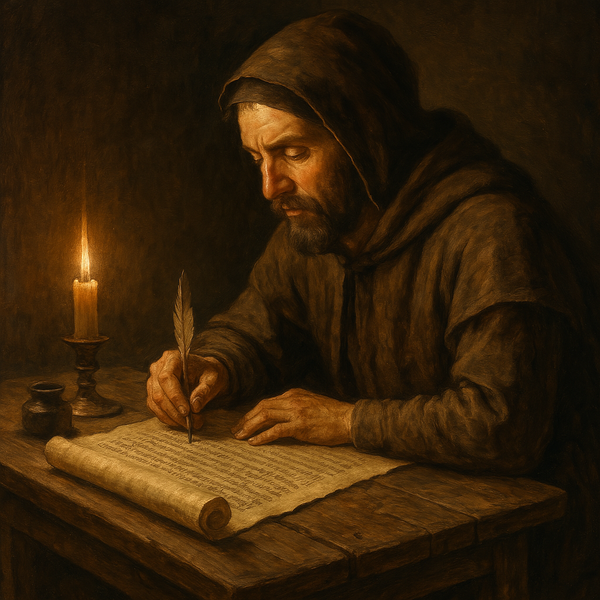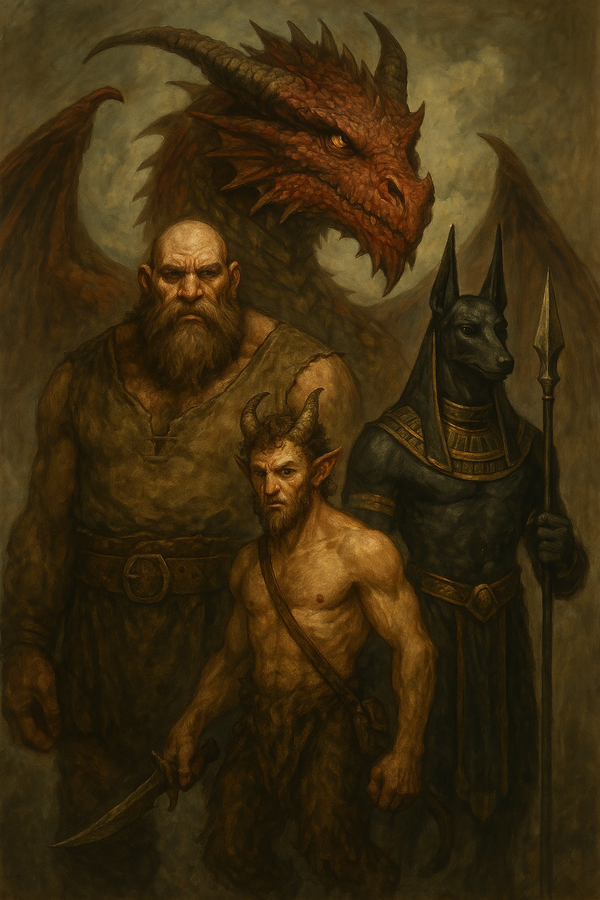The Nights Watch - Dogman according to 9th Century Kings and Scholars
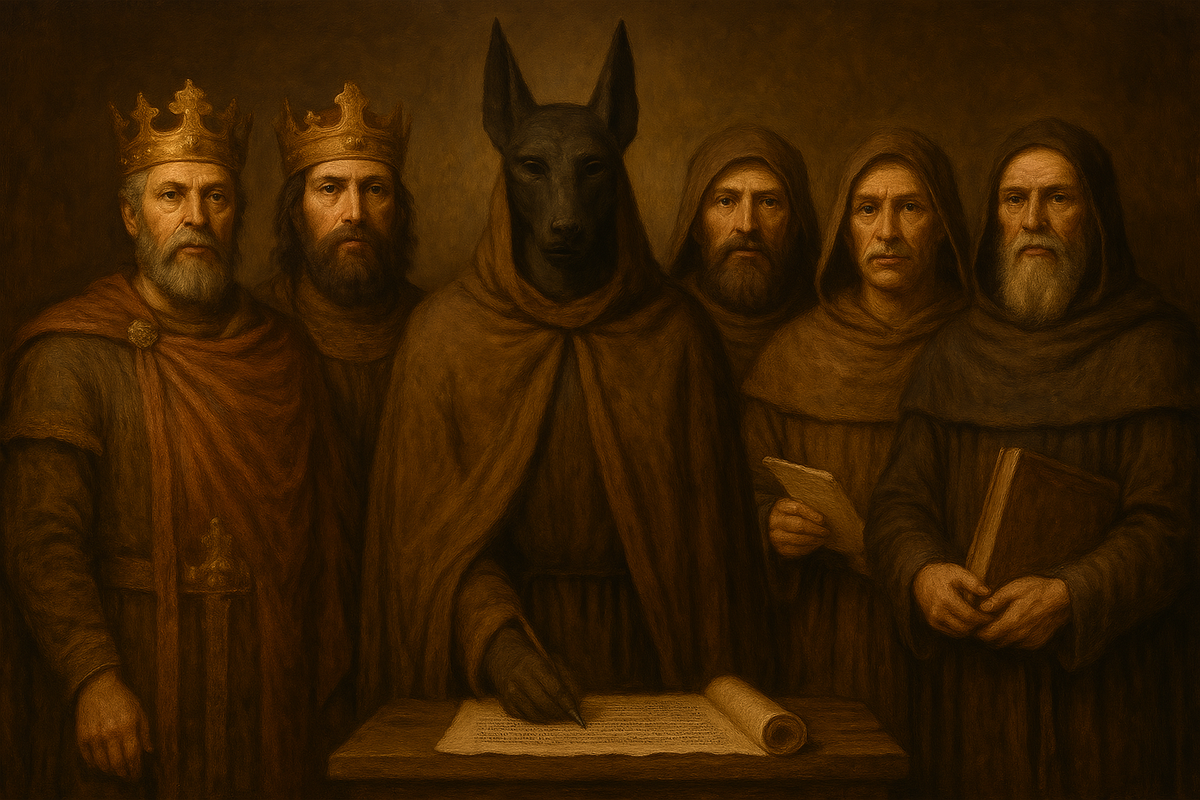
The ancient race of dog-headed men (cynocephali) is not something someone today would think of when considering France and Constantinople in the 9th century. Nonetheless, this is where some of the most significant evidence for ancient dogman is to be found. In this podcast episode, I joined Jim from The Nights Watch Podcast to discuss these and other various peripheral sources and artifacts.
Photius
Photios I of Constantinople - Wikipedia
Photius I of Constantinople (Greek: Φώτιος, Phōtios; c. 815 – 6 February 893),[a] also spelled Photius[2] (/ˈfoʊʃəs/), was the Ecumenical Patriarch of Constantinople from 858 to 867 and from 877 to 886.[3] He is recognized in the Eastern Orthodox Church as Saint Photius the Great.
Photius I is widely regarded as the most powerful and influential church leader of Constantinople subsequent to John Chrysostom's archbishopric around the turn of the fifth century. He is also viewed as the most important intellectual of his time – "the leading light of the ninth-century renaissance".
Ctesias via Photius
Ctesias of Cnidus was a Greek physician and historian who lived from 445 to 398 BC. He is best known for his book Persica, a history of Persia from the beginning of time to the reign of Artaxerxes II (404-359 BC).
Ctesias spent seventeen years at the Persian court as a physician to Artaxerxes II. During this time, he had access to Persian archives and state records, which he used to write his history.
Photius quoted, summarized, and commented on Ctesias’ writings in his work the Myriobiblon.
Ctesias, Indica Fragment (summary from Photius, Myriobiblon 72) (trans. Freese) (Greek historian circa 4th B.C.)
Ctesias is later than Herodotus, and says that he was an eyewitness of most of what he describes, and that, where this was not the case, he obtained his information directly from Persians, and in this manner he composed his history.
Ctesias, Indica Fragment
There is a river that flows through India, not large, but about two stades broad. It is called Hyparchus 11 in Indian, meaning in Greek "bestowing all blessings." During thirty days in the year it brings down amber. It is said that in the mountains there are trees on the banks of the river where it passes through, which at a certain season of the year shed tears like the almond, fir, or any other tree, especially during these thirty days. These tears drop into the river and become hard. This tree is called in Indian _Siptakhora,_12 meaning in Greek "sweet," and from it the inhabitants gather amber. It also bears fruit in clusters like grapes, the stones of which are as large as the nuts of Pontus.
On these mountains there live men with the head of a dog, whose clothing is the skin of wild beasts. They speak no language, but bark like dogs, and in this manner make themselves understood by each other. Their teeth are larger than those of dogs, their nails like those of these animals, but longer and rounder. They inhabit the mountains as far as the river Indus. Their complexion is swarthy. They are extremely just, like the rest of the Indians with whom they associate. They understand the Indian language but are unable to converse, only barking or making signs with their hands and fingers by way of reply, like the deaf and dumb. They are called by the Indians Calystrii, in Greek Cynocephali ("dog-headed"). [They live on raw meat.] They number about 120,000.
Near the sources of this river13 grows a purple flower, from which is obtained a purple dye, as good in quality as the Greek and of an even more brilliant hue. In the same district there is an animal about the size of a beetle, red as cinnabar, with very long feet, and a body as soft as that of a worm. It breeds on the trees which produce amber, eats their fruit and kills them, as the woodlouse destroys the vines in Greece. The Indians crush these insects and use them for dyeing their robes and tunics and anything else they wish.14 The dye is superior to the Persian.
The Cynocephali living on the mountains do not practice any trade but live by hunting. When they have killed an animal they roast it in the sun. They also rear numbers of sheep, goats, and asses, drinking the milk of the sheep and whey made from it. They eat the fruit of the Siptakhora, whence amber is procured, since it is sweet. They also dry it and keep it in baskets, as the Greeks keep their dried grapes. They make rafts which they load with this fruit together with well-cleaned purple flowers and 260 talents of amber, with the same quantity of the purple dye, and 1000 additional talents of amber, which they send annually to the king of India. They exchange the rest for bread, flour, and cotton stuffs with the Indians, from whom they also buy swords for hunting wild beasts, bows, and arrows, being very skillful in drawing the bow and hurling the spear. They cannot be defeated in war, since they inhabit lofty and inaccessible mountains. Every five years the king sends them a present of 300,000 bows, as many spears, 120,000 shields, and 50,000 swords.
They do not live in houses, but in caves. They set out for the chase with bows and spears, and as they are very swift of foot, they pursue and soon overtake their quarry. The women have a bath once a month, the men do not have a bath at all, but only wash their hands. They anoint themselves three times a month with oil made from milk and wipe themselves with skins. The clothes of men and women alike are not skins with the hair on, but skins tanned and very fine. The richest wear linen clothes, but they are few in number. They have no beds, but sleep on leaves or grass. He who possesses the greatest number of sheep is considered the richest, and so in regard to their other possessions. All, both men and women, have tails above their hips, like dogs, but longer and more hairy. They are just, and live longer than any other men, 170, sometimes 200 years.
https://www.ccel.org/ccel/pearse/morefathers/files/photius_03bibliotheca.htm
Ctesias, Indica Fragment
Ctesias relates these fables as perfect truth, adding that he himself had seen with his own eyes some of the things he describes, and had been informed of the rest by eye-witnesses. He says that he has omitted many far more marvellous things, for fear that those who had not seen them might think that his account was utterly untrustworthy.
Photius wrote 10,700+ words on Ctesias and his writing. That's 23 times the size of the average length of his summaries 462, making it one of the longest sections.
Philostorgius via Photius
Philostorgius, like Ctesias, was a historian whose original writings were ironically, and perhaps poetically, lost to time. Again like Ctesias, however, some of his work was saved by Photius who recounted it, for which I myself and many historians around the world are grateful. It just so happens that these writings, that have hung on by a thread, are highly beneficial for studying the topic of the Cynocephali.
EPITOME OF THE ECCLESIASTICAL HISTORY OF PHILOSTORGIUS, COMPILED BY PHOTIUS, PATRIARCH OF CONSTANTINOPLE. CHAP. 11.
He says that the whole district which lies to the east and the south, though parched up with the excessive heat, brings forth by far the finest and best productions, both by land and sea. For the sea teems with whales of incredible size, which are often seen as they rise out of the sea by those who sail around the coasts. The land also produces elephants of prodigious and gigantic size, and those which are called bull-elephants. As to this kind of beast, it is an ox of huge magnitude, and has a hide in colour and thickness closely resembling that of the elephant. This animal I saw with my own eyes, when it was brought to Rome ; and I simply describe what I beheld. There are also among them serpents whose bodies are as thick as beams, and extending in length as much as fifteen fathoms; for I have seen their skins brought to Rome. There is also an animal called a unicorn which is found in these parts. It has a head like a serpent, with the exception of a single crooked horn of no great size which grows upon it ; and its whole chin is covered with a beard. Its neck is lengthy and reaches high aloft, and especially resembles the folds of a serpent : but the rest of its body more nearly approaches that of a stag, with the exception of its feet, which are those of a lion. A picture of this animal is to be seen at Constantinople. Moreover, the cameleopard is a production of this region : this beast is in most respects like a very large stag, but in its height it approximates the form of the camel. Its neck, which it carries high aloft, is long beyond proportion to the rest of its body; and the whole of its skin from head to foot is dappled with spots like a leopard. Its fore legs are much taller than its hind ones. In these parts too there is a kind of ape, called the aesopithecus ; for the ape tribe comprises a variety of kinds.There is, for instance, the arctopithecus and the leontopithecus, and the dog-headed ape ;for the ape form is found conjoined with a variety of other animals, as is evident from the various specimens of the ape tribe which are brought to us.
Philostorgius uses the word “ape” to describe multiple chimera that he addresses, some of which he claims to have seen personally.
EPITOME OF THE ECCLESIASTICAL HISTORY OF PHILOSTORGIUS
This they clearly did in the case of the satyr, which is of the ape tribe, with a red face, and restless motion, and furnished with a tail.
EPITOME OF THE ECCLESIASTICAL HISTORY OF PHILOSTORGIUS
The sphinx, too, is a kind of ape, as I myself can testify from what I have seen. The rest of the body of the sphinx is covered with hair, just as all other apes, but from its head to its breast it is free from hair, and has the breasts of a woman.
It is painfully apparent to anyone who reads this text that he is by no means referring to monkeys of any kind but is rather attempting to point out their humanoid form without acknowledging them as human.
Ratramnus of Corbie
City of Dog by Sam Ottewill-Soulsby, 2021
"One of the most celebrated pieces of writing to emerge from the Carolingian period is the letter written in the mid ninth century by Ratramnus, a monk of Corbie (d.c.868), to Rimbert (d.888), the future Archbishop of Bremen-Hamburg.58 Rimbert had written to Ratramnus from his mission among the pagans of Scandinavia, having heard reports of dog-headed men in the vicinity.59 The question that exercised Rimbert was whether the cynocephali “arose from the line of Adam or possess the souls of animals.”60 This was a significant point, because if they were the former and therefore human, efforts should be made to convert the cynocephali. Ratramnus’s eventual reply, which is the only document that survives from this apparent exchange, argued in favor of the humanity of the cynocephali. This conclusion was based on a number of different grounds, but the bulk of the letter is concerned with an analysis of the description of the society of the cynocephali provided by Rimbert. Like “Jerome,” Ratramnus centered his understanding of the cynocephali on an ethnographic account from eyewitnesses.
Ratramnus followed Augustine’s criterion for human status. He analyzed the elements that made up the cynocephali way of life looking for outward signs of rationality. Having found these signs of rationality, he concluded that they must be human."
https://journals.sagepub.com/doi/full/10.1177/0096144220910139
Ratramnus consistently defended Saint Augustine’s views, who also mentioned the Cynocephali in his work City of God, book 16 chapter 8. Ratramnus, however, after studying the Cynocephali through historical documents and the lens of his friend Rimbert, who was encountering reports of the Cynocephali in Scandinavia, comes to the conclusion that the Cynocephali are more human than beast, which not only takes a more dogmatic stance than Augustine but directly opposed the view of many ecclesiastical scholars he revered and quoted frequently.
Epistola de cynocephalis by Ratramnus of Corbie, Carolingian Civilization: A Reader, Edited by Paul Edward Dutton, pp. 452-455
Concerning giants, who are counted among these marvelous [peoples], there is almost no one who doubts that they are humans born from [other] humans, seeing that we are aware that this is set down in the authority of the Bible. Since the Cynocephali are counted along side them, it is thought that that should [also] be observed about them, especially if those things are established which we read about Saint Christopher or which common opinion reports concerning them. Even without those reports and the opinions, it follows that whatever is born from humans is also human and endowed with the wit of human reason. For the sake of example, when we read that a calf or snake was born to a woman, I would, nevertheless, agree that neither that calf nor that snake had a human or rational soul. Indeed, a monstrous birth occurred to a woman in the time of King Alexander: the top part of that being seemed human, but the lower part possessed the shapes of various living animals. I do not believe that it can ever be convincingly shown by reason, however, that those animals, although born of human seed, have a rational soul.
Along these lines I would not believe that these Cynocephali, whom we are studying, consistently possess rational minds, even if they have their beginnings from humans, were I not persuaded by what you wrote and by those things which we read or which were reported concerning them. Now, however, there seem to be such strong and so may things [said about them], as reported above, that it would seem to be stubbornness rather than prudence to deny them or to disbelieve. Your writing bears witness that every kind of domestic beast kept in our lands is [also] kept by them. I recognize that this could not happen if they had an animal rather than rational soul. Indeed, I realize from [my] reading of Genesis that earthly animals have been subjected to humans by heaven. But it has never been heardorbelieved that animals of one kind [can] by themselves take care of [other] animals, especially those of a domestic kind, keep them and force them to obey rules and follow regular routines. But since the Cynocephali are said to possess a multitude of domestic animals, then animal savagery does not fit them because they tame their domestic beasts with gentleness.
Rabanus
The De Universo whose original title is De Rerum Naturis is an encyclopedia work comprising 22 books written by Rabanus Maurus, a ninth century Frankish monk. There are three printed editions of the De Rerum Naturis.
In this work, Rabanus says the following.
Cynocephali appellantur eo quod canina capita habeant, quosque ipse latratus magis bestias quam homines confitetur : hi in India nascuntur.
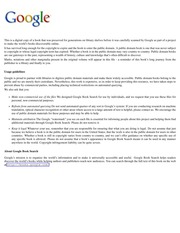
In English, this means: "Dog-headed men are named for the reason that they have dog-like heads. Its very barking reveals that they are more like beasts than men. They originated in India."
King Charlemagne
Charles the Great (Charlemagne), famously stated his disappointment that he never got to face and fight the Cynocephali.
The Life of Charlemagne by Notker, Book 2 Section 13
Then Charles, the unconquered and the invincible, glorified God for His judgment; but complained bitterly that any of the Northmen had escaped because of his absence. "Ah, woe is me!" he said, "that I was not thought worthy to see my Christian hands dabbling in the blood of those dog-headed fiends."

King Charles the Bald
Sources briefly mentioned
Saint Augustine’s address on the monstrous races
City of God by Saint Augustine 16.8
It is also asked whether we are to believe that certain monstrous races of men, spoken of in secular history, have sprung from Noah’s sons, or rather, I should say, from that one man from whom they themselves were descended. For it is reported that some have one eye in the middle of the forehead; some, feet turned backwards from the heel; some, a double sex, the right breast like a man, the left like a woman, and that they alternately beget and bring forth: others are said to have no mouth, and to breathe only through the nostrils; others are but a cubit high, and are therefore called by the Greeks “Pigmies:” they say that in some places the women conceive in their fifth year, and do not live beyond their eighth. So, too, they tell of a race who have two feet but only one leg, and are of marvellous swiftness, though they do not bend the knee: they are called Skiopodes, because in the hot weather they lie down on their backs and shade themselves with their feet. Others are said to have no head, and their eyes in their shoulders; and other human or quasi-human races are depicted in mosaic in the harbor esplanade of Carthage, on the faith of histories of rarities. What shall I say of the Cynocephali, whose dog-like head and barking proclaim them beasts rather than men? But we are not bound to believe all we hear of these monstrosities.
Cicero’s letter to Atticus
M. Tullius Cicero, Letters to Atticus, CCLI (A VI, I) (tufts.edu)
I was told all this by P. Vedius, a hare-brained fellow enough, but yet an intimate friend of Pompey's. This Vedius came to meet me with two chariots, and a carriage and horses, and a sedan, and a large suite of servants, for which last, if Curio has carried his law, he will have to pay a toll of a hundred sestertii apiece. 31 There was also in a chariot a dog-headed baboon, as well as some wild asses. I never saw a more extravagant fool. But the cream of the whole is this. He stayed at Laodicea with Pompeius Vindullus. There he deposited his properties when coming to see me. Meanwhile Vindullus dies, and his property is supposed to revert to Pompeius Magnus. 32 Gaius Vennonius comes to Vindullus's house: when, while putting a seal on all goods, he comes across the baggage of Vedius. In this are found five small portrait busts of married ladies, among which is one of the wife of your friend—" brute," indeed, to be intimate with such a fellow! and of the wife of Lepidus—as easy-going as his name to take this so calmly! I wanted you to know these historiettes by the way; for we have both a pretty taste in gossip.
Herodotus
Herodotus: The Histories. Book 4, Melpomene. 191
for in the land of these are found both the monstrous serpent and the lion and the elephant, and the bears and the venomous snakes and horned asses, besides the dog-headed men..."
Pliny the Elder
Pliny The Elder, Natural History 7.2:40-41
"On many of the mountains again, there is a tribe of men who have the heads of dogs, and clothe themselves with the skins of wild beasts. Instead of speaking, they bark; and, furnished with claws, they live by hunting and catching birds. According to the story, as given by Ctesias, the number of these people is more than a hundred and twenty thousand"
Jewish Literature connecting Nephilim to the monstrous races
- 1 Enoch, Chapter 7
- Jubilees, Chapter 7
- The Book of Giants, 4Q531 Frag. 2
- Josephus, Antiquities of the Jews, Book 1, Chapter 3, Section 1 & Book 5, Chapter 2, Section 3
Nuremburg Chronicle
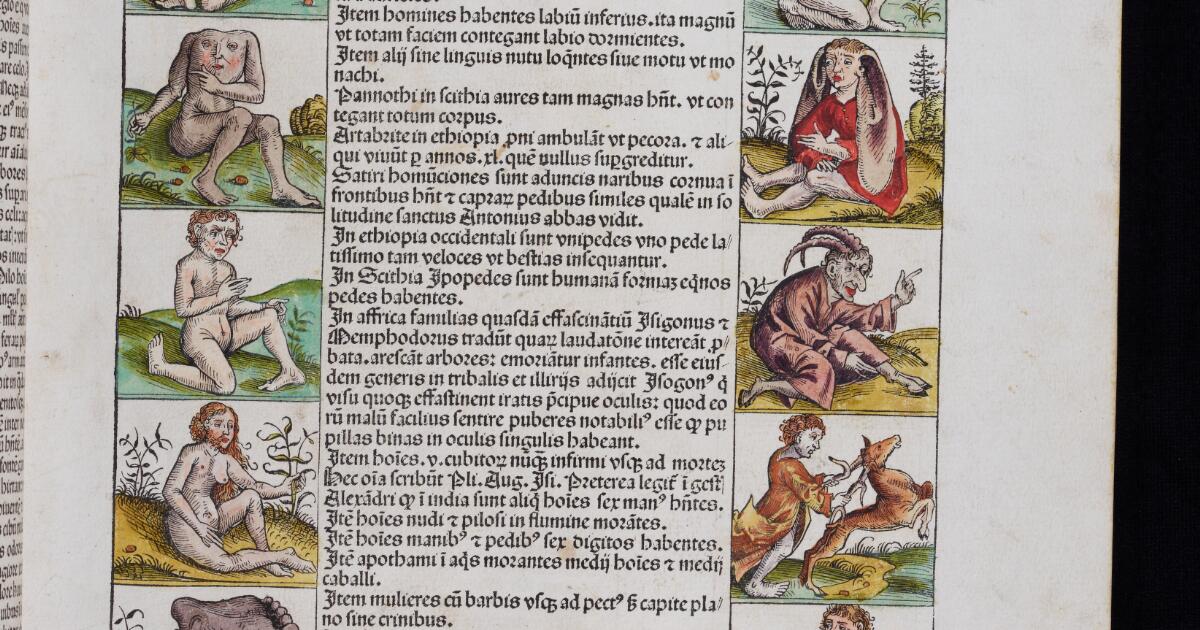
Nuremburg Chronicle, Chapter 1
After the division of tongues, many races and varieties of miraculous people appeared in various places in accordance with the will of God. For just as the Almighty graced this beautiful world with men of uniform likeness, so he also introduced therein miraculous creatures, some of whom are formed as is stated in what follows. Item: Some have but one eye, and that in the middle of the forehead. Some are a cubit in height, and do not live more than eight years. They live in the mountains of India, near the great sea, in a wholesome and ever verdant region. They conduct an unusual warfare against the cranes. Their wives bear at the age of five years. Others have very large feet and legs, but no paunches, and are marvelously fleet of foot. In the summertime, while lying on their backs, they protect themselves against the sun by the shade of their feet. Some are without heads, their eyes being in their shoulders. Some have the heads of dogs. In addition there are many and various other races of miraculous creatures that will be mentioned later in the text. Histories also record forms of people out of the ordinary course of nature, most of whom live far from the sea, and whom many considered miraculous and beyond belief. Who, without having seen them, would believe that such men as Ethiopians exist? And what person is not surprised when he sees one for the first time? Many things are considered impossible before they are seen. In Scythia, the country to the north, in a district called Geskleithron, are people such as are depicted on the following page, and who have but one eye, and that in the center of the forehead, and who are constantly at war with the Griffins.






